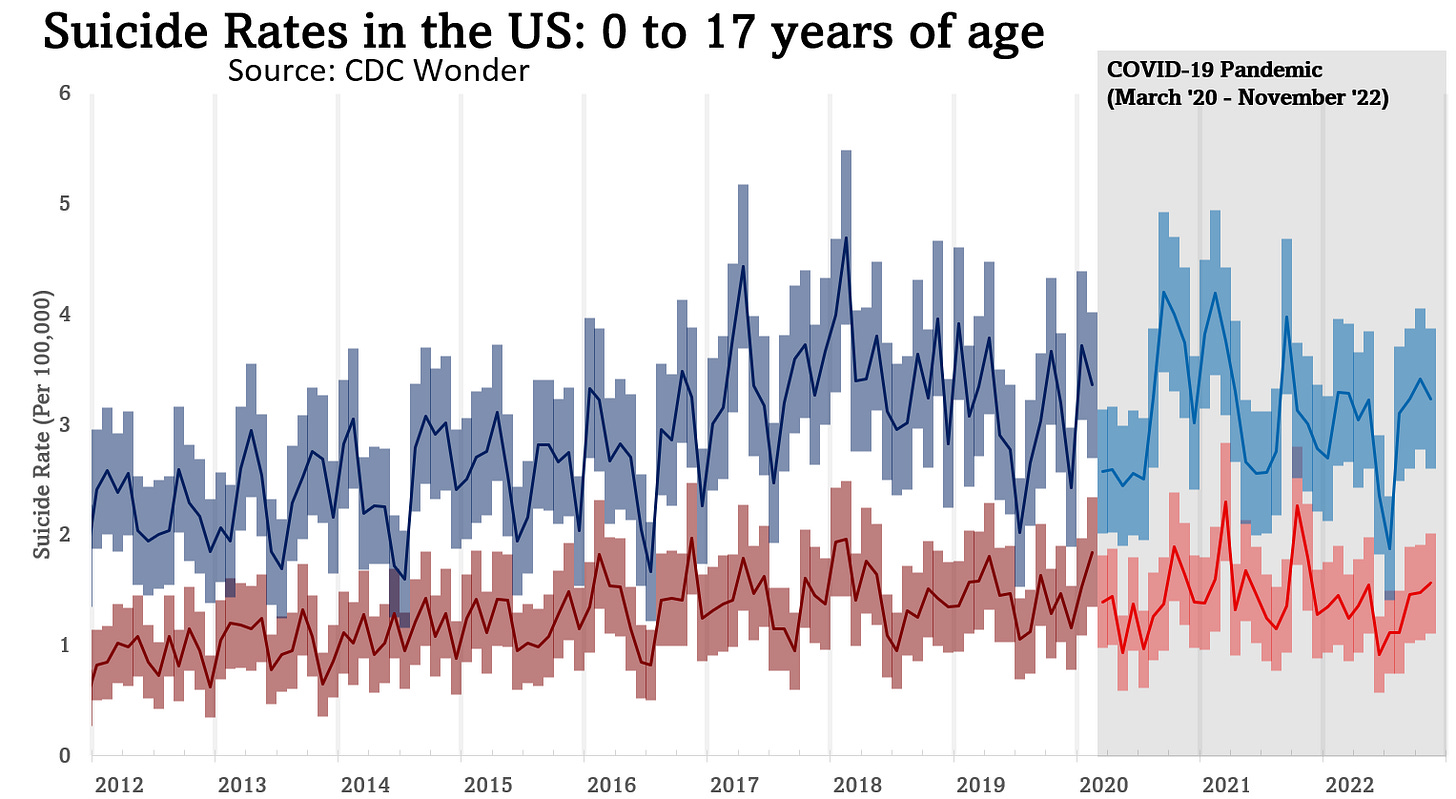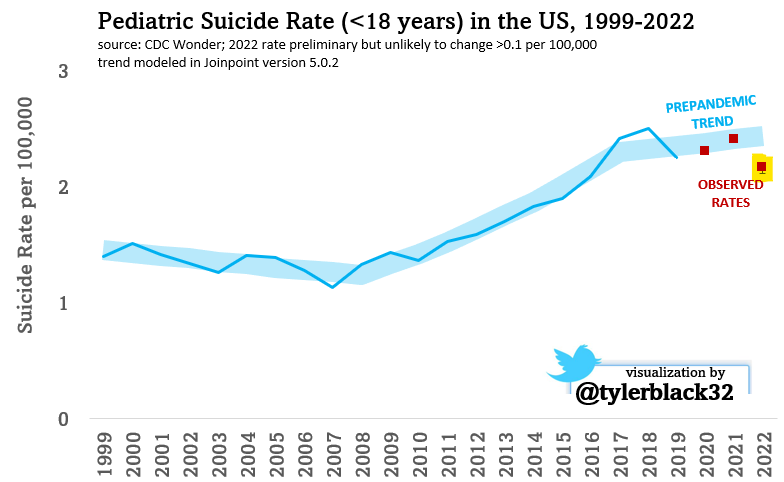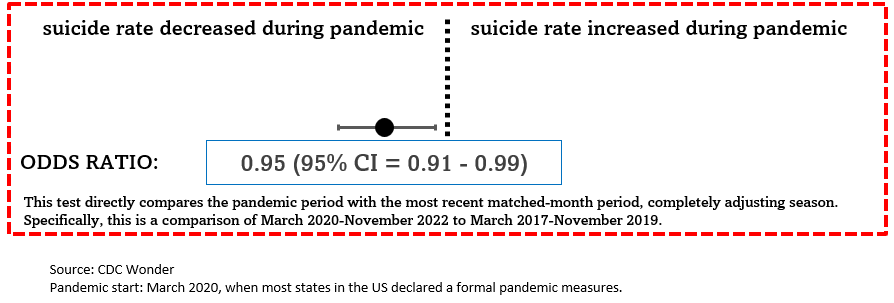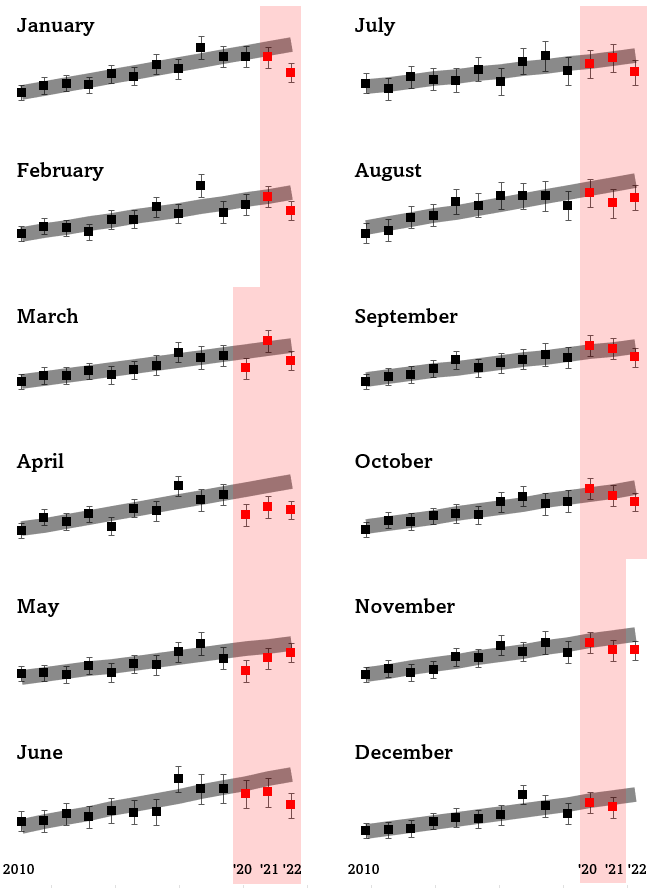The Tsunami of Pediatric Suicides that Wasn't
With the latest data to November 2022 in the US, we can predict with high confidence that the rates during the pandemic did not increase, but actually decreased.
We’ve heard it over and over.
“Lockdowns created more child suicides than saved lives…”;
“There’s a delayed effect, suicide rates in kids will skyrocket…”; or
“When the final data is in we will see an overall effect.”
When COVID burst onto the scene, so many “experts” (the parenthesis given because most physician commentators to the media and politicians were not suicide experts and in fact rarely even mental health professionals) and non-experts alike declared that a tsunami of suicides in kids would follow.
I’ve been rather public about the nature of this prediction, dating back to May of 2020 when I cautioned strongly against predicting suicide during the pandemic. As the story has developed, I’ve constantly tried to put it out there that we are not seeing what the “experts” and politician have claimed - suicide rates are NOT increasing during the pandemic.
So, let’s zoom in on child suicides, the area of strongest political concern. Using the latest CDC Wonder Data, we can take a look at rates of suicide (normalized to “deaths per 100,000 per year) in a monthly series going back to 2012:
Et voila. The best way to read the graph is to “first squint” - just appreciate the variability of pediatric suicide month to month, but see the forest and not the trees: there is no clear increase that is visible on a raw inspection.
Fortunately, we don’t just have to do raw inspections. We can take a look at the yearly trends (which remove a lot of the “jitter”):
We can remove seasonality by examining the exact same timeframes. Comparing March 2017 to November 2019 to March 2020 to November 2022 (the exact 33 months 3 years apart). This allows us to create a credible confidence interval, and doing so we can show that suicide rates in kids <18 decreased by 5% (05% confidence interval 1% to 9%) during the pandemic.
If we want to, we can completely remove seasonality by simply plotting each month independently. Here, a linear trend is applied to 2010-2019 for each month, and you can just see what happened in the “pandemic months” (shaded in red):
Finally, we come to the math-y-est (mathiest?) bit: ARIMA modeling. This is an autoregressive statistical technique to create robust mathematical models for predicting a trend that is seasonal AND changes linearly over time. For kids in the US and suicide, the values we have seen since the pandemic started are LOWER than what we would expect via ARIMA modeling.
Interestingly, if you take a look at the graph, you’ll see something very convincing: every month in 2022 is lower than the trend line for boys AND girls). The last time we saw “higher than expected” was in November 2021 in girls, and Sepetember 2021 in boys.
Of course, this information only spreads as far as others will pick it up. There is an intense moral panic environment in which negative COVID mental health findings are highlighted and positive developments are ignored, so I ask you, my dear reader. Please amplify this far and wide and get the word out. We can likely relax as it pertains to pediatric school-aged kids and suicides during the pandemic.










I need help understanding this. Based on CDC data, I wrote this recently, "The CDC’s 2021 National Vital Statistics System (NVSS) showed a massive increase in male suicide among teens and young men. From 2020 to 2021, suicide rates for males rose significantly, according to the CDC, with the largest increase among males ages 15 to 24. Among this group, the suicide rate was up 8 percent in 2021 over 2020." Does that miss something, or is the bigger point that 2022 numbers (which aren't available yet?) are down?